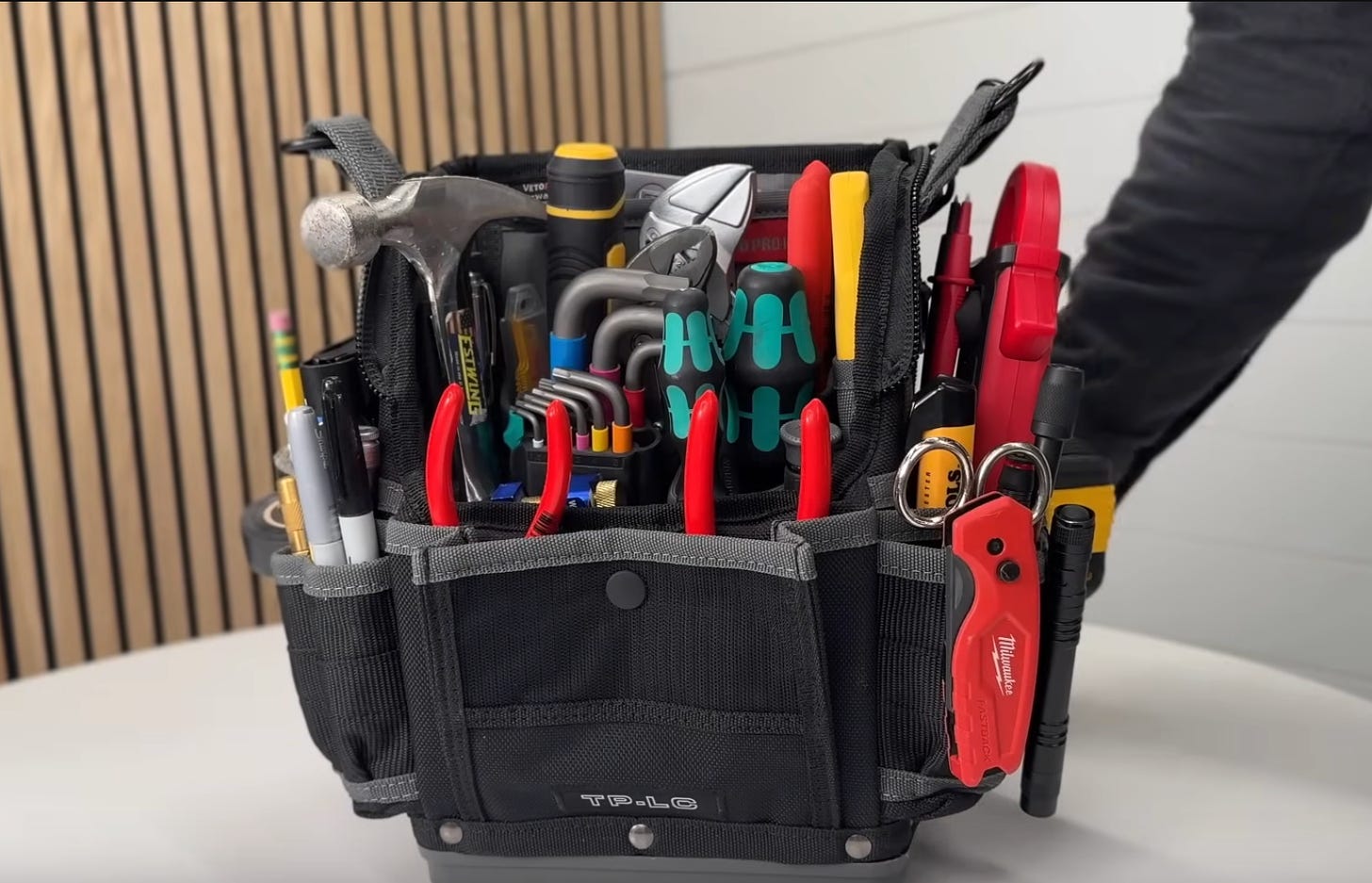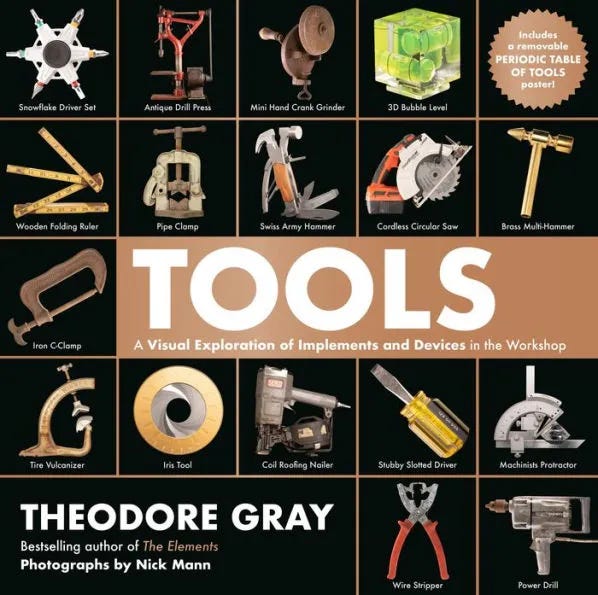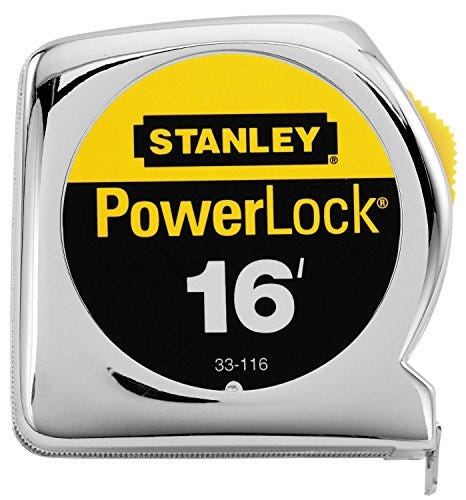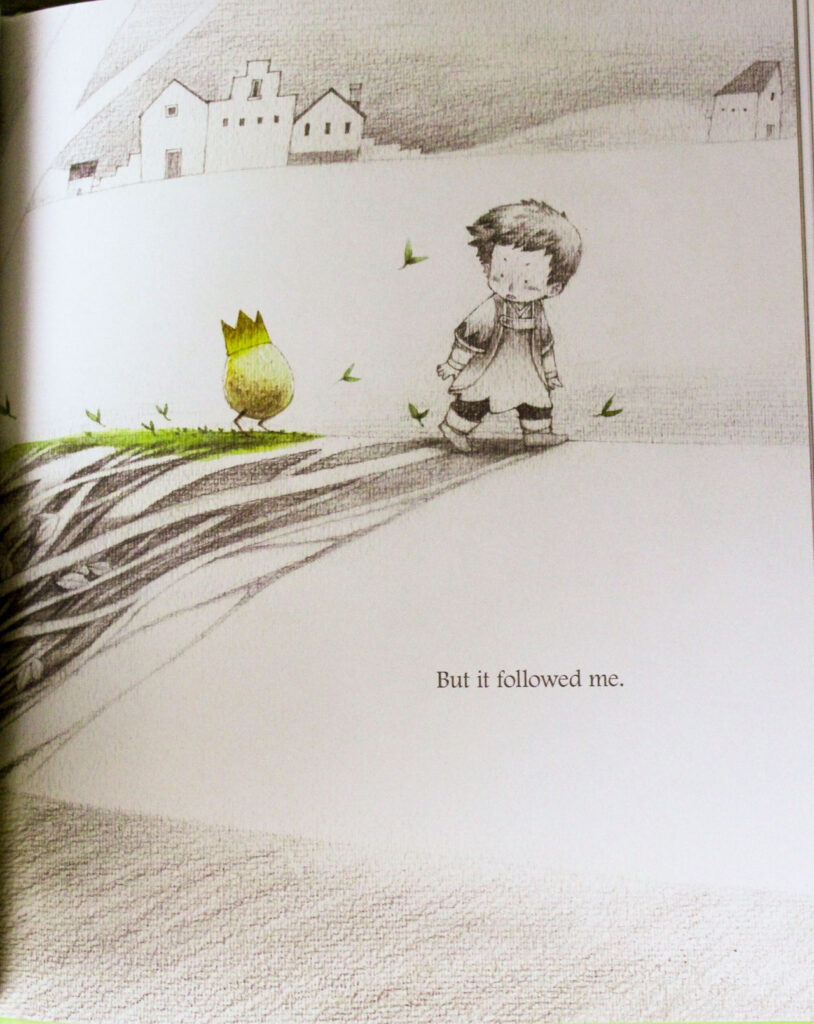Gar’s Tips & Tools – Issue #172
Weekly-ish access to tools, techniques, and shop tales from the worlds of DIY
Gar’s Tips, Tools, and Shop Tales is published by Cool Tools Lab. To receive the newsletter a week early, sign up here.
The Ultimate Compact Toolbag: Fitting a Shop’s Worth in a 17 lb Bag

When I was a teen, my friends and I were into bike camping. Carrying all of your gear on a bike meant that you had to be very mindful of weight and efficient stowage. We were obsessive about it — squeezing out every bit of excess — down to cutting the handles of our toothbrushes! Some people are similarly obsessive when it comes to EDC (everyday carry) tools and grab n’ go toolbag loadouts. Not so much for weight, but for space, and tool redundancy. Think of it as a kind of tool organization origami. In this video, Todd Parker (who’s also been in search of the lightest, smallest EDC possible) presents his ultimate full grab n’ go kit. He managed to fit over 60 top of the line tools into a bag that weighs only 17 pounds! The video shows Todd going through the bag and thoughtfully explaining each of the tools and why he chose them. So many amazing choices here, from the Wera Ratcheting Screw Driver and PB Swiss Ratcheting Stubby to the Milwaukee Fuel Surge Impact Driver. And in the end, the entire kit cost under $1000 (waiting for much of it to be on sale). That may sound like a lot, but these are most of the tools he uses regularly (as a solar and power wall installer/enthusiast).
What is the Best, Safest Portable Space Heater
On Project Farm, Todd tested 11 different brands of small space heaters. The heaters were compared for tip-over and overheat protection, fan noise, electricity consumption, power surge, spot heating, and heating a 200-square-foot space. Surprisingly, the product that did the best overall, for the cost, was the Amazon Basics heater, at $22. It’s a bit noisy, though. At $40, the Dreo brand was an A-student for both safety considerations and noise.
How to Safely Handle Printing Resin
I got a new Elegoo resin 3D printer for Christmas (thanks, honey!). We’ve discovered that we hate the resin odor. It pervades the house and smells like burnt marshmallows. And doing all of the super-careful prep and clean up work, with gloves, respirator mask, plastic waste bins, IPA, contaminated/uncontaminated zones, and all the rest of it, makes me feel like I’m stumbling around in a NASA clean room (and very out of place there). I’ve been watching videos on venting schemes and resin handling to try and mitigate some of this. This video from Nerdtronic is a favorite. Lots of sound advice here. He answered one of my burning questions: How do you safely dispose of resin (a toxic chemical). He keeps it in a plastic tub, waits for it to settle out, strains off the IPA, places the resin blob in the sun for it to cure, and then tosses it away.
Organizing Your Tools Using Little More Than Scraps of Electrical Wire
People spend so much time and money organizing their shop tool walls with pegboards, Kaizen foam, French cleats, commercial shelving systems, and the like. Here is a super-simple and cheap method that uses little more than scraps of 12-guage Romex electrical wire and #8 pan head machine screws. In this video, Eric Kimball shows how he created his tool wall using this method. He shows how he preps the wire and turns it into different hanging hooks, brackets, loops, etc. and how he achieved his overall organization and layout. I love how he hangs nut drivers using rare earth magnets clinging to little wire hooks. To grab a driver, you just pull on the handle and it separates from the magnet with little resistance.
Book Review: Tools

When I decided to write my tips books for Make: (Tips & Tales from the Workshop, Vol. 1 & Vol. 2) and to create this subsequent tips newsletter, I had a very specific mix of elements in mind. I wanted the content to be educational, useful, but I also wanted it to be well-written, story-driven, and sometimes playful and funny. I wanted to cover tips and tools in a very human way.
I can’t say how successful I’ve been, but Theodore Gray nails this balance in his latest coffee table tome, Tools: A Visual Exploration of Implements and Devices in the Workshop. This oversized, 256-page book covers 500 tools in 118 categories, from common implements like saws, drivers, and hammers, to reamers, riveters, and vulcanizers.
Each tool is illustrated with gorgeous high-resolution photography. The text is not only informative — what the tool is used for, some history of it, variations, etc. — but it is also highly entertaining and funny. Gray is known for science and tech explainer books, like The Elements, Engines, How Things Work, done in a similar format, but this is his most personable and playful book yet.
My all-time favorite book about tools is Albert Jackson and David Day’s Tools and How to Use Them. Gray’s book is wonderful, but unlike Jackson and Day’s, there is very little how-to here, few tips, no tricks. This really is more of a coffee table (or toilet tank) browser book than one for the shop, but it is certain to delight, inform, and entertain any tool enthusiast. [This review originally appeared on Boing Boing]
How to Pronounce “Knipex”
In the Todd Parker 17-pound grab ‘n go tool bag video earlier in this newsletter, I loved the fun he has with correcting years of his own mispronunciation of the German tool brand Knipex. That led me on a search to find out definitively how to properly pronounce it. Good luck. As this on Garnett-Tools proves, even those attempting to pronounce it properly, pronounce it differently. Even German tool vendors. Todd Parker says it’s Kuh-Nip-X (quoting from the source). But this guy has clips of Germans pronouncing it Kuh-Ni-Pex. At least we now know definitively that the K is not silent and it’s not Nigh-Pex or Nip-X.
Notable Quotables
Research and development is just doing it the wrong way first. — Bob Knetzger, Legendary toy designer
There is no scrap wood, just pieces that are not yet used. — Andy Pugh, YouTuber
Never add up how much you spent on tools — it’s terrifying! —Todd Parker, Solar power enthusiast
Shop Talk

In response to Bob Clagett’s recommendation of the 12’ Stanley Engineer’s Tape Measure, reader John Baglio writes:
I have a Stanley 16’ tape that looks like yours and is a perfect size. Just remember that I think the engineering scale is at 1/10ths of an inch, which is not as useful.























